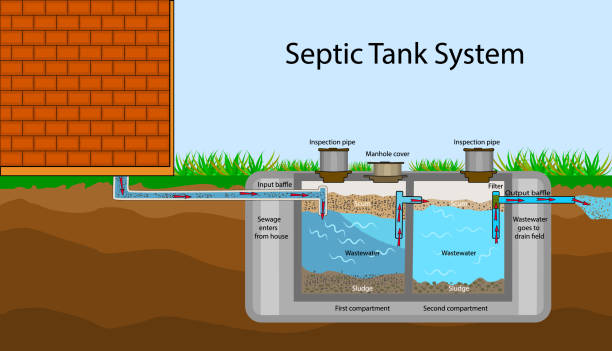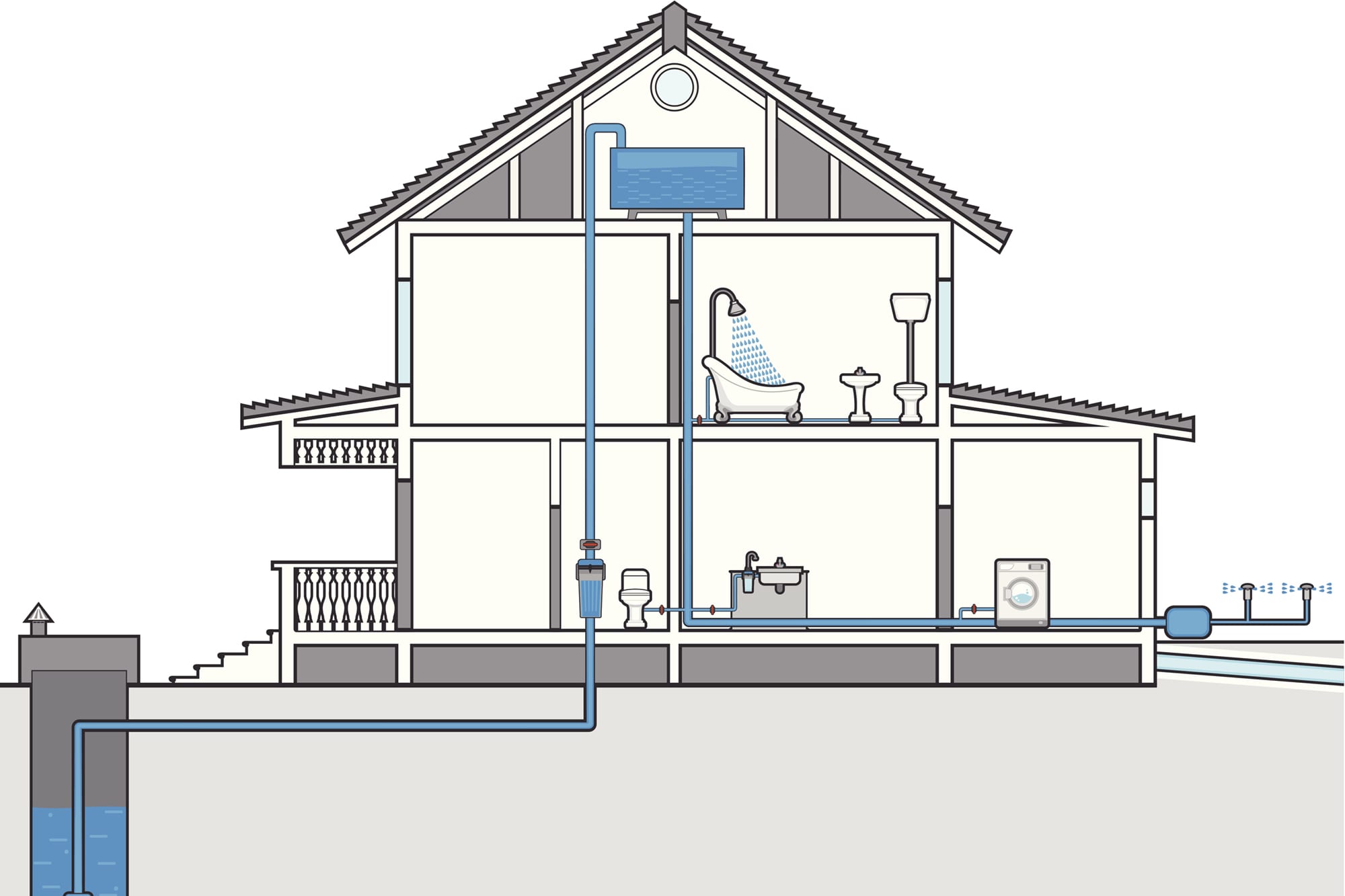Just how do you feel about Understanding Your Home's Plumbing Anatomy?

Comprehending exactly how your home's plumbing system functions is necessary for each property owner. From supplying tidy water for drinking, food preparation, and bathing to securely eliminating wastewater, a well-kept plumbing system is critical for your household's health and convenience. In this comprehensive guide, we'll explore the detailed network that comprises your home's pipes and offer ideas on maintenance, upgrades, and managing common problems.
Intro
Your home's plumbing system is greater than just a network of pipelines; it's an intricate system that ensures you have accessibility to clean water and effective wastewater elimination. Knowing its elements and just how they collaborate can aid you prevent expensive fixings and ensure whatever runs smoothly.
Fundamental Elements of a Plumbing System
Pipelines and Tubing
At the heart of your pipes system are the pipes and tubes that carry water throughout your home. These can be constructed from different products such as copper, PVC, or PEX, each with its advantages in regards to longevity and cost-effectiveness.
Components: Sinks, Toilets, Showers, etc.
Components like sinks, toilets, showers, and tubs are where water is made use of in your home. Recognizing just how these fixtures attach to the plumbing system assists in diagnosing issues and planning upgrades.
Valves and Shut-off Factors
Valves manage the circulation of water in your pipes system. Shut-off valves are vital during emergency situations or when you require to make repair work, permitting you to isolate parts of the system without interrupting water circulation to the entire home.
Water System
Main Water Line
The primary water line attaches your home to the municipal water system or an exclusive well. It's where water enters your home and is distributed to various fixtures.
Water Meter and Pressure Regulator
The water meter steps your water usage, while a pressure regulator guarantees that water streams at a risk-free pressure throughout your home's plumbing system, avoiding damage to pipes and fixtures.
Cold Water vs. Hot Water Lines
Comprehending the distinction between cold water lines, which supply water directly from the main, and hot water lines, which carry heated water from the water heater, helps in repairing and preparing for upgrades.
Drain System
Drain Pipes Piping and Traps
Drain pipelines bring wastewater far from sinks, showers, and bathrooms to the drain or sewage-disposal tank. Catches protect against sewage system gases from entering your home and also trap debris that could cause obstructions.
Air flow Pipelines
Ventilation pipes allow air into the water drainage system, protecting against suction that might slow drainage and create catches to vacant. Appropriate ventilation is necessary for keeping the honesty of your pipes system.
Relevance of Correct Water Drainage
Ensuring proper drainage prevents backups and water damages. Regularly cleansing drains and preserving traps can avoid costly repair work and expand the life of your pipes system.
Water Heater
Kinds Of Water Heaters
Water heaters can be tankless or traditional tank-style. Tankless heaters warmth water as needed, while storage tanks keep heated water for immediate use.
Just How Water Heaters Link to the Plumbing System
Recognizing exactly how water heaters attach to both the cold water supply and hot water circulation lines assists in diagnosing concerns like inadequate warm water or leaks.
Maintenance Tips for Water Heaters
On a regular basis flushing your hot water heater to eliminate sediment, inspecting the temperature setups, and examining for leakages can prolong its life-span and enhance power effectiveness.
Usual Plumbing Concerns
Leaks and Their Reasons
Leaks can take place because of maturing pipes, loosened fittings, or high water stress. Addressing leakages promptly avoids water damages and mold growth.
Obstructions and Obstructions
Clogs in drains pipes and bathrooms are often triggered by flushing non-flushable things or a buildup of oil and hair. Utilizing drain displays and being mindful of what drops your drains can protect against blockages.
Signs of Pipes Problems to Expect
Low water stress, sluggish drains pipes, foul odors, or uncommonly high water bills are indications of prospective plumbing issues that should be attended to quickly.
Pipes Maintenance Tips
Regular Examinations and Checks
Schedule yearly plumbing assessments to capture concerns early. Search for indications of leakages, deterioration, or mineral buildup in faucets and showerheads.
Do It Yourself Upkeep Tasks
Simple tasks like cleaning faucet aerators, looking for toilet leakages making use of dye tablet computers, or insulating subjected pipelines in cold environments can protect against major pipes concerns.
When to Call an Expert Plumbing Professional
Know when a plumbing problem calls for professional experience. Attempting complicated fixings without proper understanding can bring about more damage and greater fixing costs.
Upgrading Your Pipes System
Factors for Upgrading
Upgrading to water-efficient components or changing old pipes can improve water high quality, minimize water costs, and increase the value of your home.
Modern Plumbing Technologies and Their Benefits
Explore innovations like wise leak detectors, water-saving bathrooms, and energy-efficient water heaters that can save money and reduce environmental impact.
Cost Considerations and ROI
Compute the ahead of time prices versus lasting financial savings when considering plumbing upgrades. Numerous upgrades pay for themselves with minimized energy costs and less repairs.
Environmental Impact and Conservation
Water-Saving Fixtures and Home Appliances
Setting up low-flow taps, showerheads, and bathrooms can dramatically lower water use without giving up efficiency.
Tips for Reducing Water Usage
Simple habits like fixing leaks promptly, taking shorter showers, and running full loads of laundry and dishes can preserve water and reduced your energy costs.
Eco-Friendly Pipes Options
Take into consideration lasting pipes materials like bamboo for flooring, which is durable and environmentally friendly, or recycled glass for counter tops.
Emergency Readiness
Actions to Take Throughout a Pipes Emergency
Know where your shut-off valves are located and how to switch off the water in case of a ruptured pipe or major leakage.
Value of Having Emergency Contacts Helpful
Keep call info for local plumbing professionals or emergency situation services conveniently available for quick response throughout a plumbing situation.
Do It Yourself Emergency Fixes (When Suitable).
Short-term solutions like utilizing air duct tape to patch a leaking pipe or positioning a container under a leaking faucet can decrease damage until a specialist plumbing technician shows up.
Conclusion.
Recognizing the composition of your home's plumbing system encourages you to preserve it effectively, conserving time and money on repairs. By adhering to regular upkeep regimens and staying educated about modern-day pipes technologies, you can guarantee your plumbing system runs effectively for several years to find.
HOW YOUR PLUMBING SYSTEM WORKS
Which Pipes Do What?
Blue lines = fresh water supply entering the building
Red lines = hot water supply entering the building
Grey lines = pipes carrying waste away from the building and venting pipes carrying gases away from the building (through the roof)
YOUR MAIN PLUMBING SYSTEMS
There are two main plumbing systems that support your home s basic plumbing needs one that brings clean water into your home, and one that sends dirty water away from your home. Connected to the toilet, bath, shower, and other faucets in your home, these two systems keep your water flowing in the right directions.
ACCESSING FRESH WATER
Fresh and clean water is brought into your home through the main water supply line . Filtered through one pipe, this water is pressured to flow into the various fixtures in your home at any given time.
This water can be sourced from a well located on your property, a pond or river (mostly cottages), or, as in most cases, from the city s municipal water treatment centre. However, it is important to note that water that is untreated, such as the water siphoned from ponds or rivers, may not be safe to drink. Personal water supplies always need to be treated for hardness and contaminants before consumed.
MUNICIPAL WATER SUPPLIES
Improve taste and odour
Remove sediment
Eliminate hardness
Reduce chlorine
COLD WATER SUPPLY VS. HOT WATER SUPPLY
Cold water flows into your home or building through the service line, which then distributes hot or cold water to your fixtures. This line is most commonly run through a central column that runs floor to floor. Hot water runs in short and straight pipes as the longer the pipeline, the more heat that will be lost in the transfer. Having shorter pipes also allows residents to access hot water more quickly.
WASTE WATER SYSTEM
Your wastewater system is divided into two parts pipes that send wastewater away from your home and venting pipes that send sewer gas away from your home. Sewage water travels through pipes that flush the water and waste towards local sewers that are operated and managed by your city or town. Most sewer systems rely on gravity to move the wastewater to where it needs to go.
The further away from your toilet or sink, the larger wastewater pipes become. This allows for waste to be disposed of from various parts of your home or business at once without pipe blockages. The angle and flow of these pipes are also essential for keeping your waste pipes clear of build up.
https://harrisplumbing.ca/how-your-home-plumbing-system-works/

HOW YOUR PLUMBING SYSTEM WORKS
Which Pipes Do What?
YOUR MAIN PLUMBING SYSTEMS
There are two main plumbing systems that support your home s basic plumbing needs one that brings clean water into your home, and one that sends dirty water away from your home. Connected to the toilet, bath, shower, and other faucets in your home, these two systems keep your water flowing in the right directions.
ACCESSING FRESH WATER
Fresh and clean water is brought into your home through the main water supply line . Filtered through one pipe, this water is pressured to flow into the various fixtures in your home at any given time.
This water can be sourced from a well located on your property, a pond or river (mostly cottages), or, as in most cases, from the city s municipal water treatment centre. However, it is important to note that water that is untreated, such as the water siphoned from ponds or rivers, may not be safe to drink. Personal water supplies always need to be treated for hardness and contaminants before consumed.
MUNICIPAL WATER SUPPLIES
COLD WATER SUPPLY VS. HOT WATER SUPPLY
Cold water flows into your home or building through the service line, which then distributes hot or cold water to your fixtures. This line is most commonly run through a central column that runs floor to floor. Hot water runs in short and straight pipes as the longer the pipeline, the more heat that will be lost in the transfer. Having shorter pipes also allows residents to access hot water more quickly.
WASTE WATER SYSTEM
Your wastewater system is divided into two parts pipes that send wastewater away from your home and venting pipes that send sewer gas away from your home. Sewage water travels through pipes that flush the water and waste towards local sewers that are operated and managed by your city or town. Most sewer systems rely on gravity to move the wastewater to where it needs to go.
The further away from your toilet or sink, the larger wastewater pipes become. This allows for waste to be disposed of from various parts of your home or business at once without pipe blockages. The angle and flow of these pipes are also essential for keeping your waste pipes clear of build up.
https://harrisplumbing.ca/how-your-home-plumbing-system-works/
Hopefully you enjoyed our article about Anatomy of a House: Understanding the Components. Thank you for taking a few minutes to browse our posting. Be sure to take a moment to distribute this blog if you enjoyed it. Thanks for your time invested reading it.
Pricing